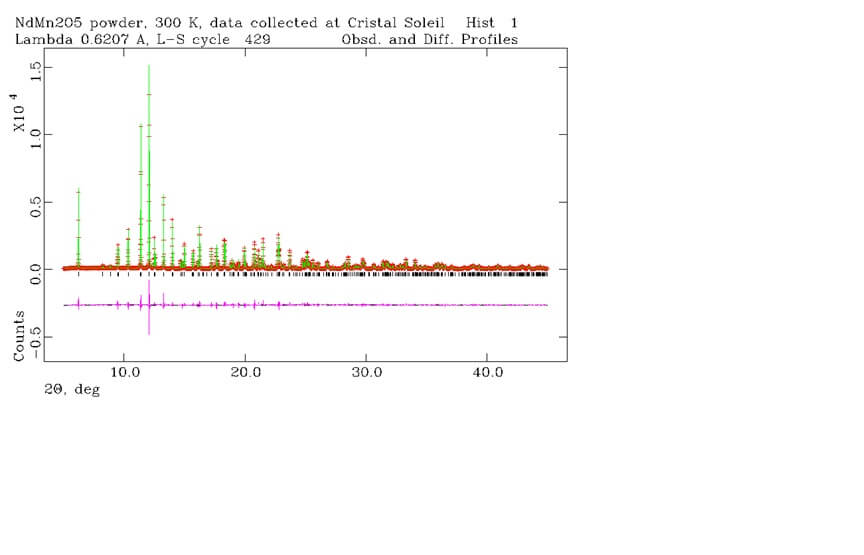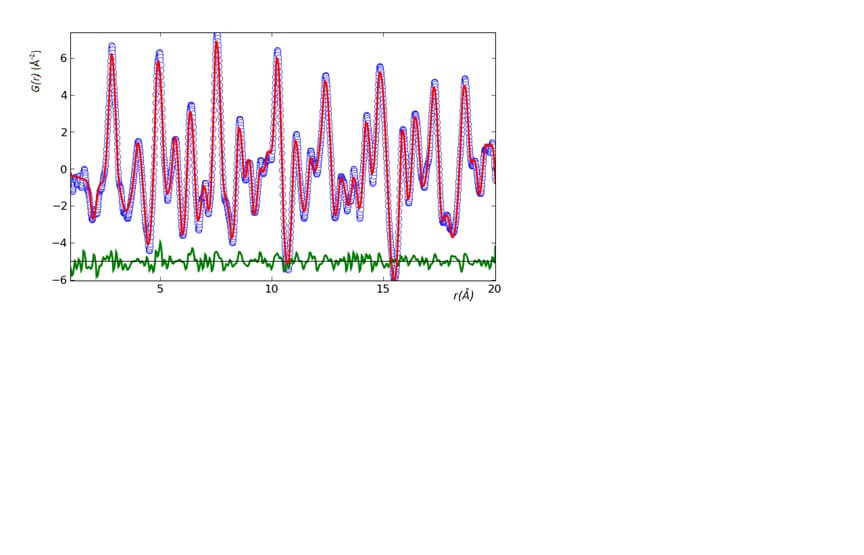Μultiferroic and Ferroelectric Materials
Understanding the microscopic origin of ferroelectricity and multiferroelectricilty requires gaining insight of the role of the lattice on the electric order in the case of ferroelectrics and on the electric and magnetic orders (and their magnetoelectric coupling) in the case of multiferroics. This challenging problem requires key information on: i) the detailed crystal structure (including disorder and defects) of the material; ii) the atomic displacements and the structural phase transitions which are cooperative to the magnetoelectric coupling; iii) the detailed magnetic and/or charge order which favors such coupling; and iv) the dynamics (spin waves, phonons, electro-magnons) related to the magnetoelectric coupling. All these issues fall in the realm of science taking place at neutron and synchrotron X-ray facilities worldwide: scattering, spectroscopy, imaging.
Most of our scientific effort was/is focused on two systems: the multiferroic material NdMn2O5 (in single crystalline and powder forms) and the ferroelectric core/shell nanocomposite BaTiO3@SiO2. The use of synchrotron X-ray and neutron scattering and the concomitant data analysis and refinement was/is essential in order to obtain key structural insights on the multiferroic and ferroelectric behavior of these materials.
- Our structural investigations of the first material, NdMn2O5, addressed the role of the form (single crystal, powder) and of the composition (nature of the rare earth element) on the crystal structure and properties of NdMn2O5. NdMn2O5 is a member of the family of materials RMn2O5 (R is a rare-earth), where the multiferroelectricity is present or absent depending on the nature and thus the size of the R cation. The structural differences between the various forms of this material were investigated by high resolution powder synchrotron X-ray diffraction and by conventional single crystal diffraction in order to gain insight into the structure property relationship. The main conclusion of these investigations are: i) Small displacements of the Mn ions can release frustration and break inversion symmetry, resulting in differences in the physical properties of the two samples (powder, single crystals) as indeed was observed from the measurements of the temperature dependence of the specific heat, the magnetization, the real part of the dielectric permittivity, and the electric polarization. ii) Weak ferroelectricity, induced by an incommensurate magnetic structure, is an intrinsic property of NdMn2O5, since it was observed at both powder and single crystalline samples. Such multiferroic behavior implies that NdMn2O5 actually bridges its close neighboring RMn2O5 compounds, i.e. the paraelectric PrMn2O5 and ferroelectric SmMn2O5. Thus our study of NdMn2O5 contributed decisively in understanding the role of the size of the R cations in the presence or not of ferroelectricity in RMn2O5 compounds.


- Our investigations of the second material, the ferroelectric the core/shell nanocomposite BaTiO3@SiO2, were/are motivated by our interest in understanding ferroelectricity at nanoscale, an area of scientific research not only academically exciting but also important from an applied perspective, given the current technological trend toward nanoscale. Barium titanate, BaTiO3, is the archetypical ferroelectric material. It is also one of the most extensively investigated functional materials because of its RT ferroelectricity, its high dielectric constant, its versatile crystal chemistry and its wide range of applications. For nearly seventy years the efforts to determine the very details of the structure-property relationship in BaTiO3 were mostly focused on ceramics, single crystals, thin films and multilayers. In the past decade, the race to understand this material has been extended in BaTiO3 nanoparticles and in BaTiO3-based nanocomposites. These studies were enabled by the tremendous advances in nanomaterials synthesis, which led to the synthesis of BaTiO3 nanoparticles and BaTiO3-based nanocomposites with unprecedented control over their size, shape, composition, strain, dispersity, self-assembly, interface and surface states. The main focus of our investigations on the ferroelectric core/shell nanocomposite BaTiO3@SiO2 was/is to understand: i) the correlation of the ferroelectricity with the size of nanoparticle, ii) the scaling of the ferroelectricity at the interfaces/surface, and iii) the concomitant structure (crystal and electronic) response to such scaling of ferroelectricity at local and nanometer length scales. For our structural studies of the core/shell nanocomposite BaTiO3@SiO2, we used neutron total scattering data which we were analyzed by real space pair distribution function analysis of BaTiO3/SiO2 core/shell nanoparticles. Neutron or synchrotron X-ray total scattering (along with pair distribution function analysis) at spallation sources and third generation synchrotron sources respectively, is a very powerful method for addressing this so-called “nanostructure problem”, i.e. the need to determine atomic arrangements in nanostructured materials quantitatively and with high precision. We focus here on the comparison of the RT local structure of the 300 nm BaTiO3 cores with the corresponding ones of bulk BaTiO3.The corresponding fit is shown in Figure 12.5. No unfitted peaks were observed; therefore its local structure is well described by the average tetragonal structure. Our structural studies up to now provide the basis for further structural investigations aiming to determine the structure response of the nanocomposite to the evolution of its ferroelectricity as a function of temperature.
